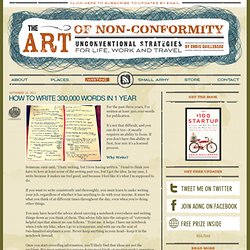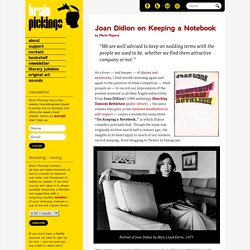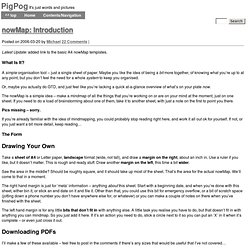

Notebook Stories: A Blog About Notebooks, Journals, Moleskines, Blank Books, Sketchbooks, Diaries and More. Fifty (50!) Tools which can help you in Writing - Stepcase Lifeh. Creative Writing Prompts. Write a scene that includes a character speaking a different language, speaking in a thick accent, or otherwise speaking in a way that is unintelligibe to the other characters.

(Note: You don't necessarily need to know the language the character is speaking—be creative with it!) Describe a character's reaction to something without explaining what it is. See if your fellow prompt responders can guess what it is. Write a story or a scene about one character playing a prank on another. Describe the scene from both characters' points of view. Writing Prompt: Write a story that involves confusion over homonyms (words that have the same spelling but different meanings) or homophones (words that sound the same but are spelled differently). For World Storytelling Day, share the best story you've ever heard or told by word of mouth, or have a fictional character recount their favorite story. How to Write 300,000 Words In 1 Year. For the past three years, I’ve written at least 300,000 words for publication.

It’s not that difficult, and you can do it too—it mostly requires an ability to focus. If you don’t have this ability at first, fear not: it’s a learned process. Why Write? Someone once said, “I hate writing, but I love having written.” I tend to think you have to love at least some of the writing part too, but I get the idea. If you want to write consistently and thoroughly, you must learn to make writing your job, regardless of whether it has anything to do with your income. You may have heard the advice about carrying a notebook everywhere and writing things down as you think of them. Once you start recording information, you’ll likely find that ideas are not the problem. “We must all suffer one of two things: the pain of discipline or the pain of regret and disappointment.” In choosing to write, you must choose the pain of discipline.
Make your art your obsession. Joan Didion on Keeping a Notebook. By Maria Popova “We are well advised to keep on nodding terms with the people we used to be, whether we find them attractive company or not.”

As a lover — and keeper — of diaries and notebooks, I find myself returning again and again to the question of what compels us — what propels us — to record our impressions of the present moment in all their fragile subjectivity. From Joan Didion’s 1968 anthology Slouching Towards Bethlehem (public library) — the same volume that gave us her timeless meditation on self-respect — comes a wonderful essay titled “On Keeping a Notebook,” in which Didion considers precisely that. Though the essay was originally written nearly half a century ago, the insights at its heart apply to much of our modern record-keeping, from blogging to Twitter to Instagram. Portrait of Joan Didion by Mary Lloyd Estrin, 1977 After citing a seemingly arbitrary vignette she had found scribbled in an old notebook, Didion asks: Why did I write it down?
NowMap: Introduction. Latest Update: added link to the basic A4 nowMap templates.

A simple organisation tool – just a single sheet of paper. Maybe you like the idea of being a bit more together, of knowing what you’re up to at any point, but you don’t feel the need for a whole system to keep you organised. Or, maybe you actually do GTD, and just feel like you’re lacking a quick at-a-glance overview of what’s on your plate now. The nowMap is a simple idea – make a mindmap of all the things that you’re working on or are on your mind at the moment, just on one sheet.
If you need to do a load of brainstorming about one of them, take it to another sheet, with just a note on the first to point you there. 100 Amazing Ways to Hack Your Moleskine Notebook.